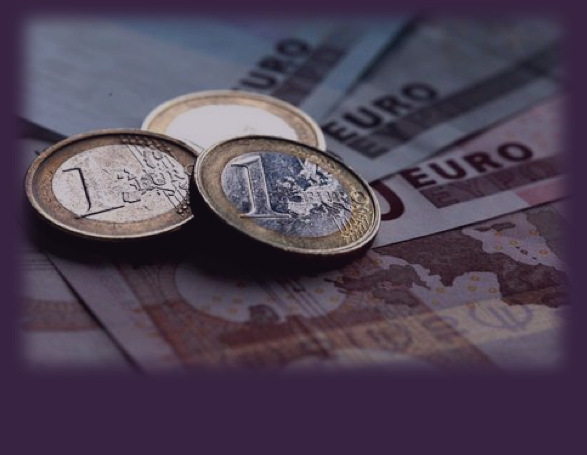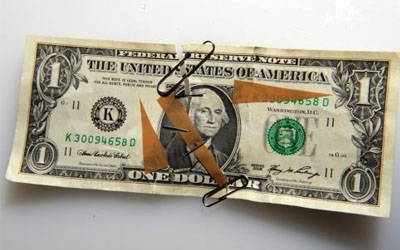
Overview
During the last two weeks replete with holidays, major currencies were relatively moribund, although the markets maintained an eye on Russia and the Ukraine. FT’s global columnist says any concerns about crisis are overshadowed by optimism in the US economy and that the situation can be overcome entirely by nice earnings and good U.S. data, or at least not too-bad data. Frankly, I tend agree with FT on this one. Net-net we should not expect to see a game-changer from the situation in Ukraine.
Among the majors, the USD is up only against the CAD in the fortnight. Even with a number of indicators pointing to better economic times ahead, last week Fed Chair Yellen reiterated that the Fed expects interest rates to remain low until the recovery is on a more secure footing and the American economy is more fully involving available workers. The Fed believes “economic conditions may, for some time, warrant keeping short-term interest rates below levels” that are “likely to prove normal in the longer run.” The subtext of this message seemed to be an effort to clarify her remarks last month during her first news conference as Fed chairwoman when it was suggested the central bank might begin to lift rates as early as the middle of 2015. Was she being too honest earlier?
USA
Expect mixed USD performance in the near term. U.S. dollar strength will come over the longer term as a gradual U.S. recovery and as the Fed rate hikes approach. As central banks maintain their respective accommodative monetary stances, the USD should gain against the EUR, CAD and the JPY but slip against GBP, commodity and emerging market currencies. New claims for jobless benefits hovered near their pre-recession levels in April, suggesting an upswing in economic activity after a brutally cold winter. Some argue that the upbeat data, especially in employment, suggest there might not be much slack in the economy. They’re completely wrong. There’s plenty of slack in the U.S. economy. The unemployment rate it is not a reliable indicator for conducting monetary policy. We’ll know (with a lag) that the economy has reached the end of the cyclical downturn when inflation picks up.
In the short term look for FX positioning to provide scope for U.S. dollar gains. Technicals are broadly neutral. Implied and realized volatilities will increase significantly and quickly if the situation in the Ukraine deteriorates.
- Conference Board index of leading indicators rose 0.8% in March, better than 0.7% forecast.
- Initial claims ticked up 2,000 to a seasonally adjusted 304,000 for the week of April 12th.
- Philadelphia Fed index increased to 16.6 in April (The highest in 7 months) from 9.0 in March.
- US pending home sales in Feb fell 11% y/y.
- Industrial production in March is up to 0.7% and Feb was revised up from 0.6% to 1.2%.
- March import prices fell 0.6% y/y.
- U.S. weekly jobless claims were a favorable surprise, falling 32,000 to 300,000.
Russia (RUB)
Perhaps you’ve noticed that the Russia/Ukraine situation has worsened; Putin warned that Ukraine is “on the verge of civil war” after Kiev sent in troops against pro-Russia separatists. In a phone call to his Freundin, Angela Merkel, he described the move as a “sharp escalation.” Both the Ukraine and Russia have already accused the other of violating the terms of agreement coming out of last week’s talks in Geneva between Russian, the Ukraine, the U.S., and the E.U.
FT reported that big European firms (Big oil, big chemical companies, and big banks) are lobbying against harsher sanctions. “European countries have resented the US’s hectoring tone on the need for sterner measures against Russia, when the EU’s trade relation is almost a dozen times bigger than America’s.” Western sanctions have already resulted in soaring cost of imports, billions in capital fleeing the country for safety, and the Russian economy is teetering on the edge of recession. The New York Times reported that local grocery stores in Moscow are now selling anchovies packed in sunflower oil rather than olive oil. So needless to say, things already aren’t good in Russia, and it looks like Putin is prepared for them to get worse. Expect more sanctions as Obama has taken military action off the table. At least George W isn’t around to start another war.
With the exception of Emerging European currencies, which are down, the forex market’s reaction to the crisis remains muted. If things worsen, look for the Russian ruble’s recent plunge to continue, and as for the Ukrainian hryvnia, expect extreme volatility. Bloomberg reported that the “hryvnia gained as the central bank restricted lenders’ access to the currency market to stabilize trading amid diplomatic efforts to contain turmoil in the country’s east.” The hryvnia was up 14% last week.
- Current USD/RUB rate is 35.6890 Spot.
- Mid implied volatility is 10.94%.
For those looking for interesting opportunity with an attractive risk/reward ratio, consider the following structure:
Long RUB forward and Long USD Call/RUB Put, which is a long synthetic straddle. The structure benefits from a discount in the forward rate of the long RUB forward.
- Sell USD/RUB 1-Month forward at 36.2015 for (Get long RUB, which is at a .085% discount to the spot rate).
- Buy 1-Month USD Call / RUB Put with 35.6890 Strike (54.60 Delta).
- Forward’s implicit deposit rate is 16.98% annualized, or 1.4150% per month.
- Yield from US dollar cash position 0.24%.
- Downside Breakeven (if the RUB appreciates) is USD/RUB 35.6648.
- Upside Breakeven (if the RUB depreciates) is USD/RUB 36.2257.
- Maximum Gain: Unlimited through RUB appreciation or depreciation vs. the USD.
- Maximum Downside: 1.52% of invested USD amount.
China
China’s monetary authority announced the details of reductions in the reserve requirement ratio for rural banks, and reiterated it will maintain appropriate liquidity. The authorities are persisting in depreciating the yuan, which hit the lowest since Feb 2013. A 3% drop y/y.
China’s 1st quarter economic growth was within a reasonable range. It rose 7.4 % through March y/y. It was “weak” by the standard of earlier years and the slowest since 2012; however, it was better than the months of Jan and Feb 2014 and was above market expectations. Nevertheless, it represented a slowdown from 7.7% in Q4, and it’s the lowest rate in 6 quarters.
The government is cutting reserves requirements for some rural banks. Some analysts speculate that China will relax its crackdown on property lending.
- March retail sales eased to 12.2% y/y.
- Industrial output slowed to 8.8% y/y.
- March trade surplus fell to US $7.71B.
- Exports fell 6.6% y/y.
Euro (EUR)
Draghi said the strengthening of the exchange rate requires further monetary stimulus, and indicated that was an important dimension for price stability. It’s likely that he would prefer the euro at 1.3000, but he has already said so and the market has stopped moving his way. The gradual economic recovery continues, but with inflation returning to recent lows. The ECB has signaled a more explicit dovish bias. That bias and the possibility of further central bank easing should see the euro soften over time.
- German March PPI fell 0.3%.
- Eurozone CPI rose 0.9% m/m in March and 0.5% y/y. The lowest sinceNov 2009.
- Core inflation was up 0.7% after 1% in Feb.
- EU had inflation down to 0.5% from 0.8% in Feb, the lowest since Nov 2009.
- March core CPI was revised in the Eurozone to 0.7% y/y.
- February current account surplus to narrowed to €21.9B.
- Industrial output rose 0.2% m/m for February.
- Current EUR/USD rate is 1.3802.Mid implied volatility is 6.04%.
- Current EUR/JPY rate is 141.61.
- Mid implied volatility is 7.88%.
- Recommended Enhanced Yield structure: See Long EUR/JPY structure.
Australian Dollar (AUD)
Central bank sensitivity to the exchange rate has subdued, but Chinese growth and more pronounced U.S. Fed tightening remain longer term downside concerns for the Australian dollar. Data continues to improve; employment, growth and confidence are encouraging. Balanced FX positions also offer technical support for future gains. Expect the AUD dollar to continue to appreciate against its major counterparts. Implied volatility is off its recent highs.
- March employment rose by 18,100, while the jobless rate fell to 5.8%
- February employment rose 47,300.
- Jobless rate was steady at 6.0% in February.
- Consumer confidence rose 0.3% m/m.
- February home loans rose 2.3% m/m.
- Final domestic demand edge up just 0.1% q/q.
- Current AUD/USD rate is 0.9366.
- Mid implied volatility is 7.14%.
- Recommended Enhanced Yield structure: Long AUD forward.
- Long AUD/USD forward at 0.9376 for 2-Weeks.
- Sell 2-Week AUD Call / USD Put with 0.9400 Strike (42 Delta).
- Forward’s implicit deposit rate is 2.20%.
- Yield from US dollar cash position 0.24%.
- Yield from option premium 8.60% annualized.
- Structure’s yield is 11.04% annualized (from forward deposit rate, U.S. deposit rate, and option’s premium) plus potential capital gain from AUD appreciation to 0.9400.
Great British Pound (GBP)
The pound approached a four-year high versus the U.S. dollar as the jobless rate dropped below the 7 percent threshold that Bank of England Governor Mark Carney set as an initial guide for considering a boost in interest rates. Don’t expect the BoE to honor the threshold and start tapering.
- UK unemployment fell to 6.9% over Dec-Feb, from 7.1% over the previous 3 months, as expected. U.K.
- March claimant count unemployment fell 30,400.
- Average weekly earnings are up 1.7% in the 3 months y/y, from 1.4% in the previous 3 months—one notch about March inflation at 1.6%.
- Current GBP/USD rate is 1.6828.
- Mid implied volatility is 5.16%.
Recommended Enhanced Yield structure: Long GBP Forward
- Long GBP/USD forward at 1.6839 for 3-Weeks.
- Sell 3-Week GBP Call / USD Put with 1.6900 Strike (37 Delta).
- Forward’s implicit deposit rate is 0.00%.
- Yield from US dollar cash position 0.24%.
- Yield from option premium is 5.25% annualized.
- Structure’s yield is 5.49% annualized (from forward deposit rate, U.S. deposit rate, and option’s premium), plus potential capital gain from GBP appreciation to 1.6900.
Canadian Dollar (CAD)
Canada’s currency was the biggest loser over the past six months among 10 developed-nation peers tracked by Bloomberg Correlation-Weighted Indexes, tumbling 7.2 percent. The CAD dropped as the Bank of Canada held its benchmark interest rate at 1 %, where it’s been since 2010. The inflation data reinforces the central bank’s neutral bias, and believe it or not, it is providing the loonie some much needed support.
- February new house prices were steady at 1.5%.
- January GDP rose a bit more than expected, by 0.5% m/m and 2.5% y/y.
- CPI firmed further to 1.5% y/y in March.
- Core CPI edged up to 1.3% y/y.
- USD/CAD rate is 1.1025.
- Mid implied volatility is 5.82%.
Recommended Enhanced Yield structure: Long CAD forward
- Short USD/CAD forward at 1.1017 for 2-Weeks.
- Sell 2-Week USD Put / CAD Call with 1.0975 Strike (34 Delta).
- Forward’s implicit deposit rate is 0.00%.
- Yield from US dollar cash position 0.24%.
- Yield from option premium is 6.60% annualized.
- Structure’s yield is 6.84% annualized (from forward deposit rate, U.S. deposit rate, and option’s premium), plus potential capital gain from CAD appreciation to 1.0975.
Japanese Yen (JPY)
China’s economic growth slowed less than forecast, dampening demand for the safety of the JPY. The JPY also dropped as market’s risk appetite swelled amid reports that showed U.S. industrial production. Japanese imports are up; but it was due mostly to higher energy costs. Bloomberg reported that the government “will cut its economic assessment for the first time in almost a year and a half, reflecting concern about the blow to consumption from this month’s sales-tax increase.” Don’t expect a new stimulus plan from the Japanese government; the reasoning behind the sales tax was to starting paying the country’s mountain of debt. Implied volatilities are off sharply.
- Export volume up 0.6% in the fiscal year or 10.8% in yen terms.
- Consumer confidence fell to 37.5, the lowest level since late 2011.
- Imports up 2.4% in volume, 17.3% in yen terms.
- Household spending fell 2.5% y/y in Feb.
- Current USD/JPY rate is 102.60.
- Mid implied volatility 7.23%.
- Current EUR/JPY rate is 141.55.
- Mid implied volatility is 7.55%.
Recommended Enhanced Yield Structure: Short JPY vs. EUR
- Long EUR/JPY forward at 141.56 for 3-Weeks.
- Sell 3-Week EUR Call / JPY Put with 142.00 Strike (44 Delta).
- Forward’s implicit deposit rate is -0.10 %.
- Yield from US dollar cash position 0.24%.
- Yield from option premium is 9.54% annualized.
- Structure’s yield is 9.65% (from forward deposit rate, U.S. deposit rate, and option’s premium), plus potential capital gain from EUR appreciation to 142.00. Additionally, structure benefits from potential appreciation vs. USD.
Mexican Peso (MXN)
The central bank has expressed comfort with the level of inflation, suggesting that monetary policy is likely to remain on hold. Growth is slowly improving, while successful implementation of reforms should result in increased economic activity later this year. Technicals show an improving outlook, while a break of key levels is moderately positive for the peso. Expect further gradual gains in the MXN.
- March unemployment rate unexpectedly rose to 5.3%
- March CPI slowed to 3.76% y/y and the core CPI slowed to 2.89% y/y.
- February industrial output was a slight downside surprise, holding steady at 0.7% y/y.
- Current USD/MXN rate is 13.0426.
- Mid implied volatility is 7.71%.
Recommended Enhanced Yield Structure: Sell MXN Put against U.S. deposit, not a forward.
- Sell 2-Weeks USD Call / MXN Put with 13.20 Strike (30 Delta).
- Yield from US dollar deposit 0.24%.
- Yield from option premium is 13.95% annualized.
- Structure’s yield is 13.95 % annualized (from deposit and option’s premium). If option is assigned, result will be long MXN at 13.20.
Tradersdna is a leading digital and social media platform for traders and investors. Tradersdna offers premiere resources for trading and investing education, digital resources for personal finance, market analysis and free trading guides. More about TradersDNA Features: What Does It Take to Become an Aggressive Trader? | Everything You Need to Know About White Label Trading Software | Advantages of Automated Forex Trading


































